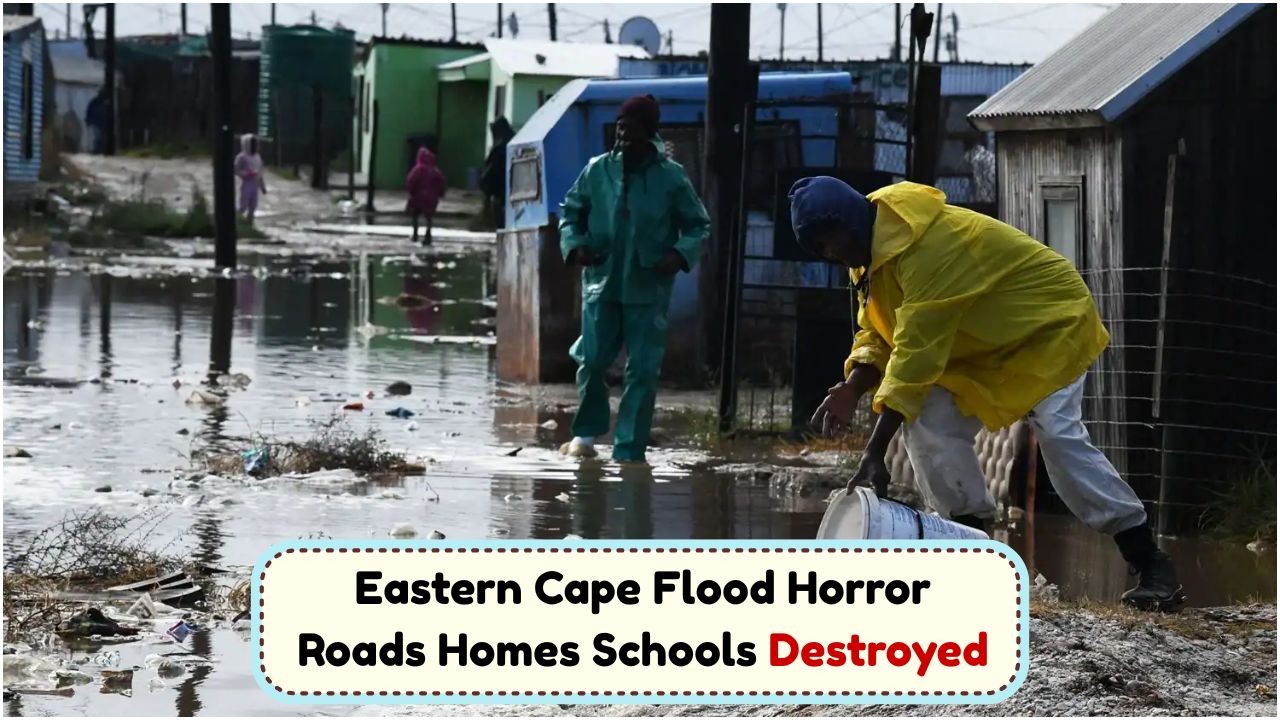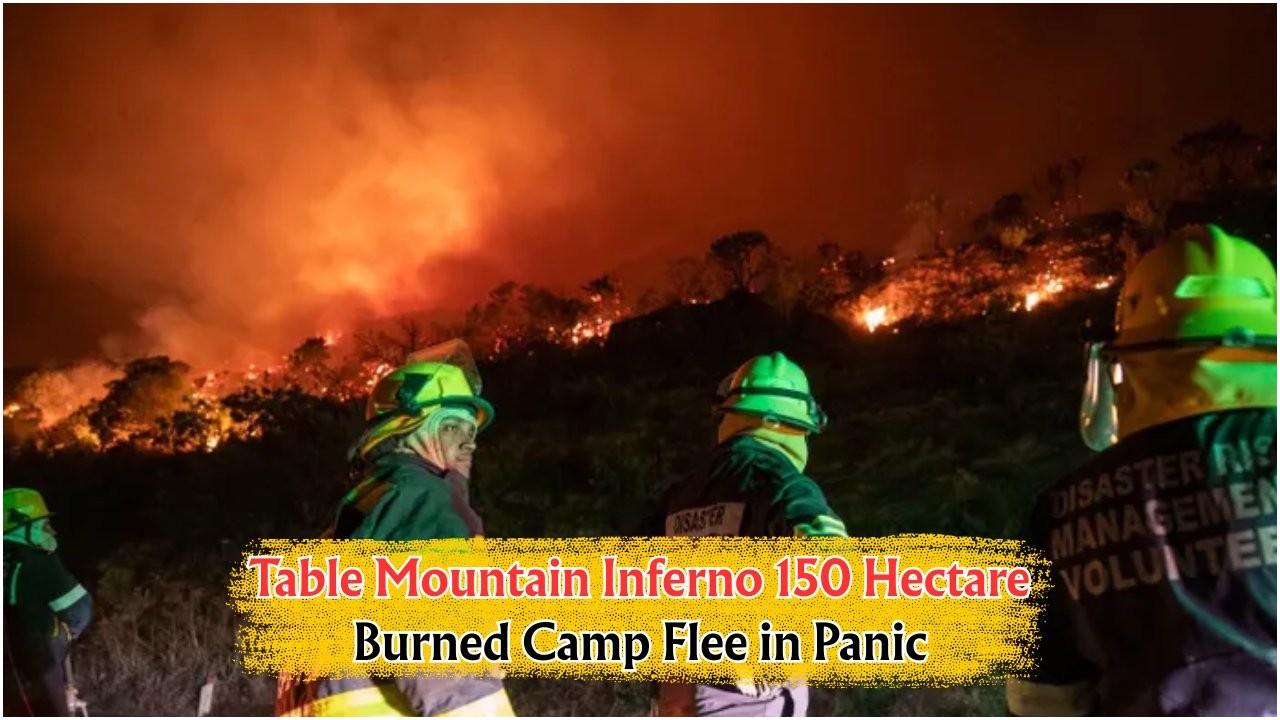Eastern Cape flood disaster: In the wake of the catastrophic floods that have swept across the Eastern Cape, South Africa, the region is grappling with the aftermath of one of the deadliest natural disasters in recent memory. The devastating floods have claimed 103 lives, leaving communities in ruin and desperate for aid. Despite the urgency of the situation, many affected areas have yet to receive the necessary relief efforts, highlighting significant logistical challenges in disaster response. The floods have not only caused tragic loss of life but have also displaced thousands, destroyed homes, and severely impacted local infrastructure, further exacerbating the plight of the affected populations.
Impact of the Eastern Cape Floods
The impact of the Eastern Cape floods is stark and far-reaching, affecting both urban and rural communities across the province. With over a hundred lives lost, the emotional toll on families and communities is immense. The floodwaters have ravaged homes, leaving many without shelter and basic necessities. The destruction of infrastructure, including roads and bridges, has hampered relief efforts and isolated several communities, making it difficult to deliver aid and support.
 August 2025: South Africa's Greylist Exit Sparks Predictions of 22% Surge in Incoming Capital
August 2025: South Africa's Greylist Exit Sparks Predictions of 22% Surge in Incoming Capital
- Over 103 fatalities reported in the region.
- Thousands of residents displaced from their homes.
- Significant damage to infrastructure, including roads and bridges.
- Critical shortage of clean water and sanitation facilities.
- Disrupted access to healthcare and emergency services.
- Loss of agricultural land and impacts on local food supply.
- Severe impact on local businesses and economy.
- Long-term psychological effects on survivors and families.
Challenges in Delivering Urgent Aid
Delivering urgent aid to the affected areas in the Eastern Cape has proven to be a formidable challenge. The severe damage to infrastructure has complicated the logistics of transporting relief supplies. Many roads remain impassable, and some areas are accessible only by air or water. The coordination between various relief agencies and government bodies is crucial yet challenging, as they work to ensure that aid reaches those most in need.
| Aid Type | Status |
|---|---|
| Food and Water | Partially delivered |
| Shelter Materials | In progress |
| Medical Supplies | Delayed |
| Sanitation Facilities | Inadequate |
| Emergency Services | Operational |
| Rehabilitation Projects | Pending |
| Psychological Support | Limited |
| Infrastructure Repair | Ongoing |
Community and Government Response to Loss
The response from both the community and government agencies has been a mix of resilience and frustration. Local communities have shown remarkable solidarity, with neighbors helping each other in the absence of immediate official aid. However, frustration mounts as government agencies struggle to provide timely assistance. The South African government has pledged support, but the scale of the disaster requires coordinated efforts at multiple levels.
- Government pledges emergency funds for relief operations.
- Local NGOs stepping in to provide immediate assistance.
- Volunteer groups organizing community support networks.
- Calls for international aid and support.
- Efforts to restore basic services and utilities.
- Public appeals for donations and supplies.
Eastern Cape’s Infrastructure and Economic Challenges
The flood disaster has laid bare the vulnerabilities of the Eastern Cape’s infrastructure. The extensive damage to roads, bridges, and public utilities is a testament to the need for robust infrastructure that can withstand natural calamities. Moreover, the economic impact is profound as local businesses face disruptions, agricultural lands are submerged, and the tourism industry takes a hit.
- Immediate need for infrastructure rebuilding.
- Economic aid for affected businesses and farmers.
- Strategic planning for future disaster resilience.
- Investments in sustainable infrastructure development.
Long-Term Recovery and Resilience Building
Looking ahead, the focus must shift towards long-term recovery and building resilience against future disasters. This requires a comprehensive approach that includes not only rebuilding but also planning for sustainable development. Community empowerment and involvement in decision-making processes are crucial to ensure that recovery efforts are effective and inclusive.
- Development of disaster preparedness programs.
- Community-led rebuilding initiatives.
- Incorporation of climate change adaptation strategies.
- Strengthening local governance and emergency response systems.
- Investment in education and awareness programs.
Resources and Support Initiatives
| Organization | Initiative | Status |
|---|---|---|
| NGO A | Food Distribution | Ongoing |
| Government | Infrastructure Repair | Planned |
| Local Volunteers | Community Shelters | Active |
| International Aid | Financial Support | Pending |
| Health Services | Mobile Clinics | Limited |
| Environmental Groups | Reforestation | Proposed |
| Private Sector | Rebuilding Funds | Under Review |
FAQ Section
In the aftermath of the Eastern Cape floods, there are several common questions and concerns being raised by the public and affected communities.
 Devastating July Blaze Consumes 150 Hectares: Table Mountain Wildfire Triggers Mass Evacuation
Devastating July Blaze Consumes 150 Hectares: Table Mountain Wildfire Triggers Mass Evacuation
- What caused the Eastern Cape floods?
A combination of heavy rainfall and inadequate drainage systems led to widespread flooding. - How can people contribute to relief efforts?
Donations can be made to reputable NGOs and volunteer organizations actively working in the region. - What resources are most needed right now?
Immediate needs include food, clean water, medical supplies, and shelter materials. - How is the government responding to the crisis?
The government has pledged emergency funds and is working with local and international partners to coordinate relief efforts. - What long-term solutions are being considered?
Plans include infrastructure rebuilding, disaster preparedness programs, and sustainable development initiatives.
Community Involvement in Recovery
Community involvement is critical in the recovery process, ensuring that efforts are tailored to the unique needs and strengths of each community. Empowering local leaders and organizations to take charge of rebuilding efforts fosters resilience and sustainability.
- Grassroots initiatives for rebuilding homes and infrastructure.
- Local businesses collaborating to support recovery.
- Community forums for sharing resources and information.
- Partnerships with local government for coordinated recovery.
- Empowerment programs for women and youth in affected areas.
Future Preparedness and Resilience Planning
Building resilience against future disasters is essential for the Eastern Cape.
Efforts must focus on strengthening infrastructure, enhancing early warning systems, and fostering community awareness. Investing in sustainable development and climate adaptation strategies will be key to mitigating the impact of similar events in the future.
Collaborative approaches involving government, NGOs, and communities are crucial to effective disaster management.
By prioritizing resilience, the Eastern Cape can better withstand and recover from future natural disasters.
Ultimately, a united effort involving all stakeholders will pave the way for a more resilient and prepared Eastern Cape.








